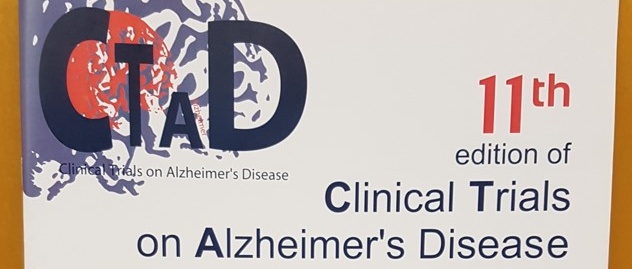
Choose a channel
Check out the different Progress in Mind content channels.

Progress in Mind

Tau is a complex, multifaceted target, implicated in many mechanisms involved in the pathology of Alzheimer’s disease. While the understanding of tau’s role is growing, current therapeutic strategies aim to reduce overall tau levels in the brain. In a keynote lecture at CTAD 2018, Professor Lennart Mucke, identified the potential, challenges, and progress made with anti-tau treatments in development. Ongoing tau-focused clinical trials are multiple and involve immunotherapies, antisense oligonucleotides (ASOs), and small molecule tau inhibitors. Ultimately, anti-tau drugs may become one of the many strategies to combat Alzheimer’s disease.
In his keynote lecture at the 11th Congress of CTAD, Professor Lennart Mucke, University of California San Francisco (UCSF), USA, challenged the convention that the key role of tau is as a microtubule stabilizer.1 Tau is a complex, multifaceted target, implicated in many pathomechanisms of Alzheimer’s disease2, he said.
Tau is a complex, multifaceted target, implicated in many pathomechanisms of Alzheimer’s disease
While tau is one of the best established targets in neurodegeneration, what is not currently known is in which form, how, and where tau acts, said Professor Mucke.
Tau is a multifunctional protein interacting with many signaling networks and a master regulator of intracellular trafficking.2 What is not yet identified is whether the most pathogenic form of tau is a misfold monomer, a fragment, or a multimer; whether it is fibrillar, or nonfibrillar; whether it acts intracellularly or extracellularly; which of tau’s many post-translational modifications, conformational states, and isoforms are fundamental; and as well as the role of tau spreading.3
Consequently, tau-related therapeutic strategies to reduce overall tau levels and ongoing tau-focused clinical trials are multiple.4 Tau-related compounds in clinical development fall broadly into two categories: large biological molecules – active vaccines, aggregation inhibitors, antibodies for passive immunotherapy, and antisense oligonucleotides– and small molecules – which include acetylase inhibitors, kinase inhibitors, O-GlcNAc transferase inhibitors among others.
Tau-related therapeutic strategies to reduce overall tau levels and ongoing tau-focused clinical trials are multiple
Several tau immunotherapies have advanced from proof-of-concept studies to phase 2 clinical trials, which will determine therapeutic success in humans. Factors that may affect the efficacy and safety of anti-tau immunotherapy include: the tauopathy targeted, disease stage, and nature of the antibody i.e. tau epitope, site of action, charge, isotype, affinity and whole versus fragment.5
One trial underway is attempting to block overall tau production with antisense oligonucleotides (ASOs) – strands of nucleotides that bind to tau messenger RNA thus preventing translation of the tau gene into protein. Partial reduction (≤75%) of tau by genetic manipulation during early development or by treatment with ASOs in adulthood is well tolerated in animal models.6 ASOs have shown promise in other disease areas; whether long-term treatment with ASOs is practical and safe in humans remains to be seen.
It is the development of small molecule drugs that reduce overall tau levels that could prove to be most fruitful and more practical in the long run said Professor Mucke.
Anti-tau small molecule drugs could prove to be most fruitful and more practical in the long term
One example of the small molecule approach is via inhibition of tau acetylation. Acetylated tau is implicated in different tau pathologies.7-9 Aberrant tau acetylation plays a critical role in tau proteostasis and toxicity – tau hyperacetylation leads to tau accumulation, impaired neuronal plasticity, seeding and propagation, which combined lead to development of the disease state.
Ultimately, anti-tau drugs may become one of the many strategies to combat Alzheimer’s disease
Aberrant neural network activity, dysfunction and loss of synapses, and degeneration of specific neuronal populations are the main substrates of cognitive decline in Alzheimer’s disease. It is likely that these abnormalities are caused by co-pathogenic interactions among diverse factors and pathways, including tau and amyloid-β.10 Multi-factorial diseases often require the combination of different treatments. Ultimately, anti-tau drugs may become one of the many strategies to combat Alzheimer’s disease as monotherapy or in combination, concluded Professor Mucke.